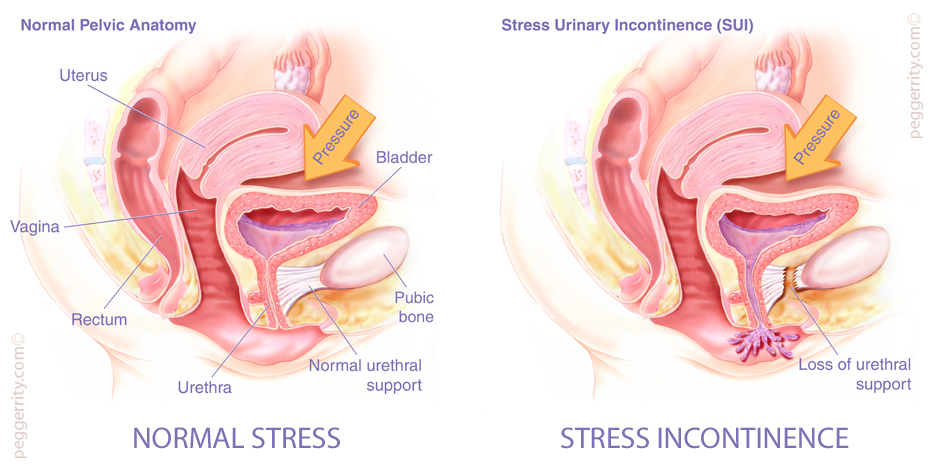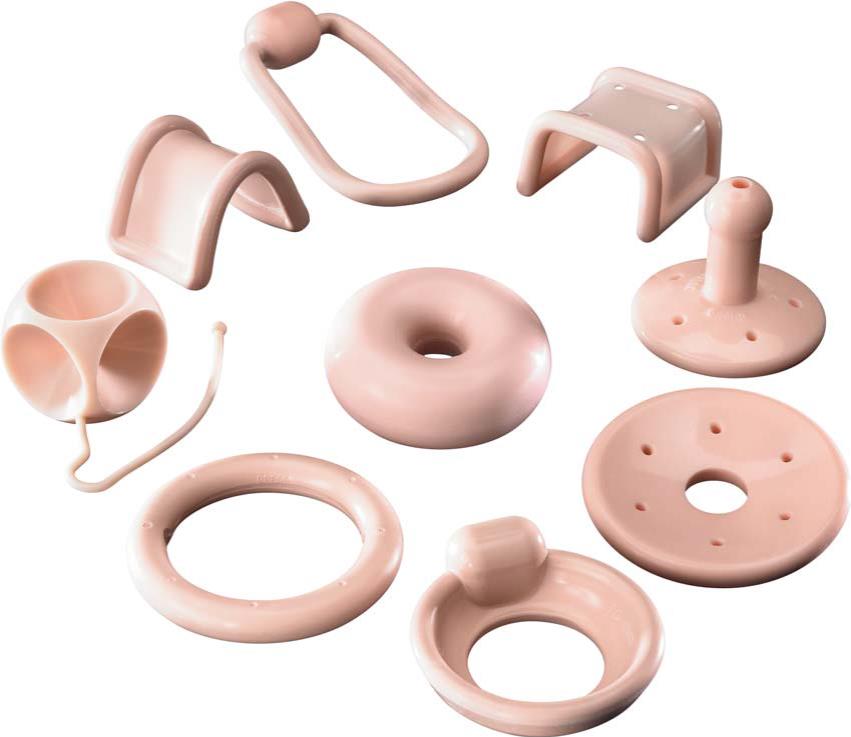Page Contents
OVERVIEW
This page is dedicated to providing an overview of treatment options for stress urinary incontinence in females.

Here are some general categories of treatment options (listed from least to most aggressive).
- Lifestyle changes
- Physical therapy
- Bladder training
- Pessaries
- Pharmacological therapy
- Surgery
LIFESTYLE CHANGES
There are a number of lifestyle changes that have showed to help improve symptoms in female patients with stress urinary incontinence.
Weight loss (for overweight/obese patients):
Obesity has been established as a risk factor for urinary incontinence, and most all overweight/obese women who present with any type of urinary incontinence are generally advised to try and lose some weight through diet and exercise.
PHYSICAL THERAPY
Physical therapy is often the first-line treatment that is recommended for stress urinary incontinence.
Kegel exercises:
Supervised pelvic floor therapy:
Vaginal weighted cones:
BLADDER TRAINING
While typically used for other forms of incontinence, women who have stress incontinence only at higher bladder volumes can also benefit from timed voiding (in order to keep bladder volumes below the point at which stress incontinence occurs).
PESSARIES
Pessaries are are intravaginal support devices that are inserted to reduce prolapse/incontinence, and can be used with/instead of pelvic floor strengthening exercises to treat/manage stress urinary incontinence in females.

PHARMACOLOGICAL THERAPY
Generally speaking pharmacological therapy is not recommended for patients with stress incontinence. With this in mind there can be some exceptions:
- Duloxetine: there is mixed information regarding the potential benefit that this SSRI medication may have on patients with urinary stress incontinence. In patients who require an SSRI medication for another reason it may be worth considering this medication given its possible benefit treating incontinence as well.
SURGERY
Patients who have failed more conservative treatments may be candidates for surgical intervention. There are a few different types of surgical procedures that can be used to correct stress urinary incontinence in females.
Midurethral sling:
The midurethral sling is a procedure where a strip of synthetic mesh that is placed under the urethra. It acts as a hammock to lift/support the urethra and the neck of the bladder.

Bladder neck sling:
Injection of urethral bulking agents:
Colposuspension:
Page Updated: 11.28.2016